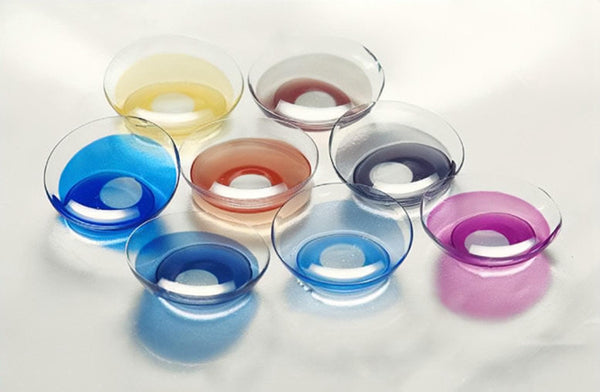When were colored contacts invented?
Eyes are the window to the soul, and having a pair of bright and beautiful eyes is everyone's dream. Therefore, for fashion people with nearsightedness, contact lenses are one of the major inventions in the 1940s: They can help them see the world clearly and are convenient and beautiful to wear. Unexpectedly, the idea of the modern invention of contact lenses appeared hundreds of years ago. And the first to propose the use of contact lenses to improve eyesight was Leonardo da Vinci (1452-1519), the great Italian Renaissance painter, natural scientist, and engineer.

In 1508, Leonardo da Vinci discovered that putting a glass jar filled with water and looking at the scenery outside can change the visual function of the eyes. He also sketched this idea and expounded the relevant theories. It's the oldest history of contact lenses that can be traced back, and Leonardo has been hailed as the "father of contact lenses" by later generations. In 1632, French philosopher René Descartes (1596-1650) also made similar suggestions. But hundreds of years later, humans still did nothing on contact lenses. Until 1801, Thomas Young further advanced this idea by making a water-filled glass tube connected to a microlens and installing it on his own eyes. In 1845, the British John Herschel discovered that injecting transparent animal glue between the glass and the eye and placing it on the surface of the cornea can temporarily correct the vision of the patient.
In the late 19th century, contact lenses finally appeared: In 1887, German ophthalmologist, Adolph Fick produced the first pair of contact lenses that could correct nearsightedness and farsightedness. He first conducted experiments on animals, and the results proved that his contact lenses are effective, but the lenses are too heavy to cover the entire eyeball, the wearer can only wear them for a few hours and cannot be promoted. In 1938, due to the invention of the plastic PMMA material, Mullen and Obring used PMMA as the material to produce the first pair of all-plastic contact lenses. In 1948, the American California optician Kevin Tuohy created a small all-plastic lens called Microlens. The diameter covers only the cornea and is even smaller than the cornea. It is thinner and can be worn more comfortably all day, known as the "corneal contact lens". At this point, a contact lens that can be promoted clinically and used to correct ametropia in patients is truly born. Then, European and American various countries and Japan began mass production.
In the 1950s, people made great improvements to contact lenses, making the shape of the lens more similar to the cornea, and getting smaller and thinner. But hard contact lenses that people can wear all day for the first time are still uncomfortable. In 1960, Czech polymer chemist Otto Wichterle developed PHEMA (Poly-hydroxyethyl methacrylate) and used this material to develop soft contact lenses a few years later. This kind of contact lens is very soft after absorbing water, it is very comfortable to wear, and the wearing period is prolonged, so it's very popular.

In 1971, soft contact lenses (RGP) were first launched in the United States. In the 1980s, colored contact lenses, disposable contact lenses, and extended-wear contact lenses appeared. At present, contact lenses are mainly used for monocular aphakia, extreme myopia, irregular astigmatism, and other eye diseases to correct ametropia and improve vision. Contact lenses can also treat some eye diseases, and colored contact lenses can cover up corneal leukoma and improve appearance. According to data from the US Federal Food and Drug Administration, 82% of people currently are wearing soft contact lenses. Today in the 21st century, the aesthetic function of contact lenses has become more prominent, and various types of cosmetic colored contacts have appeared successively, becoming the new favorites of fashion people.
Generally speaking, the development speed of contact lenses is quite fast. In less than half a century, they have been popularized globally. The technology is also constantly improving, and the materials are also being updated. It also allows users to see clearly. People are more confident and beautiful. If you want to know more about the basic knowledge of contact lenses or the history of contacts development, you can follow Icoloured®. Here is a wealth of content waiting for you!

